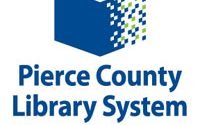BOSTON — Addressing the health disparities highlighted and exacerbated by the COVID-19 pandemic will require looking beyond the medical sector alone, doctors said Monday during a panel hosted by Attorney General Maura Healey.
A new report from Healey’s office outlines steps the state can take to address health inequities, including building a more diverse health care workforce, improving the collection and sharing of demographic data and ensuring that all populations have access to the same care resources.
The report opens by describing a “bleak picture” of racial and ethnic health care disparities in Massachusetts, saying people of color here are generally “less healthy and die younger than white residents,” with higher rates of heart failure, stroke hospitalization and diabetes-related deaths.
The infant mortality rate for the state’s Black newborns is twice that of white newborns and Black mothers are more likely to die in connection with pregnancy than white mothers; Asian Boston residents are more likely than their white counterparts to have hepatitis B and liver cancer; and Hispanic Massachusetts residents have an HIV infection rate that is more than six times higher than it it is for non-Hispanic white residents, the report says.
COVID-19 infection, hospitalization and death rates are also notably higher for Massachusetts residents of color than for white residents, the report notes, citing Department of Public Health data.
“We’ve known a long time about these disparities and while some progress has been made, it’s time to treat this issue like the problem that it really is,” Healey said. “It’s a generations-long public health crisis calling out for urgent action, not an unfortunate but intractable problem. Meeting this crisis with the urgency it demands will mean reimagining some parts of our health care and our public health systems, and I know that our state is up to the challenge.”
Boosting telehealth
The report recommends boosting access to telehealth and doing so in a way that does not worsen existing disparities by leaving behind lower-income, older and rural populations, and those that do not speak English.
“The realization that about 41,000 households in the Boston area don’t have access to internet really makes it very apparent how people are benefitting from telehealth, which we know is very important and very critical for how we’re providing care for patients right now and probably will continue to be very important going forward,” Dr. Mothusi Chilume of East Boston Neighborhood Health Center said during the Zoom discussion. “If there are big sections of our population that don’t have the ability to really avail themselves of this, this is going to lead to more issues with inequity.”
To make free and low-cost internet access and devices more widely available in underserved areas, the report calls for expanding state grants and subsidies, advocating for more federal funding and developing public-private partnerships.
On the health insurance front, Healey’s report recommends the state require “coverage and payment parity across all carriers for telehealth services over the next two years” and “ensure payment parity between telephonic, video, and in-person visits, where clinically appropriate.”
Differing House-Senate bills that look to build on emergency orders from Gov. Charlie Baker and cement telehealth’s place in the care system have been before a conference committee of six lawmakers since July 31.
Monica Escobar Lowell of UMass Memorial Health Care said uneven access to the internet and devices has consequences beyond telehealth access, pointing to children engaged in remote learning.
“I’m particularly concerned with the possibility of losing an entire generation of children, with their families who do not have access to technology,” she said. “We will have a whole cohort of, again, vulnerable populations that are not getting educated and will not be able then to be successful, get jobs, and if we couple that with the mental health problems the pandemic has exacerbated, and add all the upstream and downstream social determinants of health, imagine we as a society in about 20 years. We will be in tough shape.”
Other factors
Along with access to technology, panelists highlighted other non-medical factors, like access to affordable housing and paid sick leave, which they said can make it easier for people to quarantine if they have COVID-19 symptoms.
“Our public health response really can’t be divorced from public policy, and we can’t solve these problems by ourselves as health care professionals,” Massachusetts General Hospital neurologist Dr. Altaf Saadi said.
Saadi said she had a patient with severe early onset dementia who lost his job and had to move in with his elderly mother.
The mother lived in public housing and was not permitted to have another resident in her home, so the agency moved to evict her. The since-expired eviction moratorium the state had in place at the time “bought us time to advocate for her and her son to obtain alternative housing arrangements,” Saadi said.
Chilume said that the median rent for a two-bedroom in the Boston area is about $2,500.
“It’s not surprising that we have households that are multigenerational, with people who are living together who have low-paying jobs who are forced to make really difficult decisions, as the attorney general mentioned, about whether to continue to work, whether to stay home, how to get to work, and so on and so forth,” he said. “Thinking about this along those lines will really help us not only deal with this pandemic here but really address how we provide health care to our population in the future.”
###

















